Ancient Underground System Discovered Near the Western Wall
An extraordinary underground system, dating back around 2,000 years, was uncovered near the Western Wall. Experts believe this complex was once used by early Roman-era Jerusalemites.
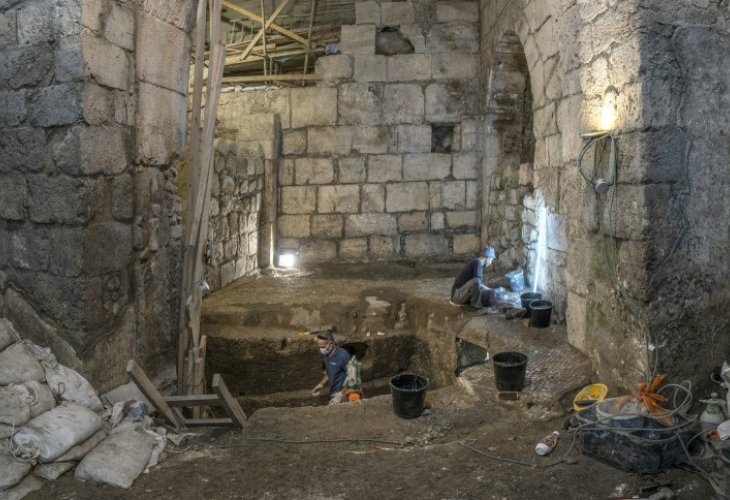 Excavation and Preservation Works (Photo: Shai Halevi, Israel Antiquities Authority)
Excavation and Preservation Works (Photo: Shai Halevi, Israel Antiquities Authority)(Video credit: Israel Antiquities Authority. Filming and editing: Yaniv Berman)
A first-of-its-kind underground system, carved about 2,000 years ago, has been uncovered near the Western Wall. According to researchers, the carved complex was used by the residents of early Roman-era Jerusalem, just before the destruction of the Second Temple. The system was found beneath the floor of a large, impressive Byzantine building.
The discovery took place during excavations by the Israel Antiquities Authority at the "Strauss House" site, beneath the entrance lobby to the Western Wall tunnels. Excavations resumed about a year ago, and the find was made by participants from pre-military academies in Jerusalem who took part in the digs. The system is composed of an open courtyard and two rooms, arranged on three levels connected by carved staircases.
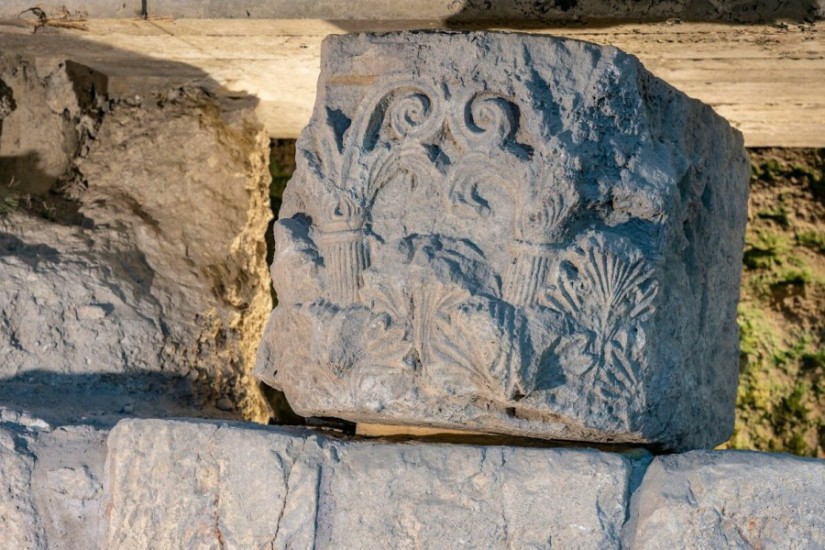 A column from the Second Temple period (Photo: Yaniv Berman, Israel Antiquities Authority)
A column from the Second Temple period (Photo: Yaniv Berman, Israel Antiquities Authority)Dr. Barak Monnickendam-Givon and Tehila Sadiel, directors of the excavation on behalf of the Israel Antiquities Authority, explain, "This is a unique find. It is the first time that an underground system has been uncovered near the Western Wall. We must understand that 2,000 years ago, like today, buildings in Jerusalem were constructed from stones. The question arises, why invest so much effort and resources in carving underground rooms into the hard rock?"
According to Dr. Monnickendam-Givon, "The wealth of findings from the excavation opens a window into the daily lives of ancient city residents. Among other things, we found cooking utensils made of refined clay, dozens of clay oil lamps for lighting, a stone cup known as a measuring cup, and a fragment of a vessel used for handwashing and storing water as part of the purity laws in the Jerusalem of the Temple period."
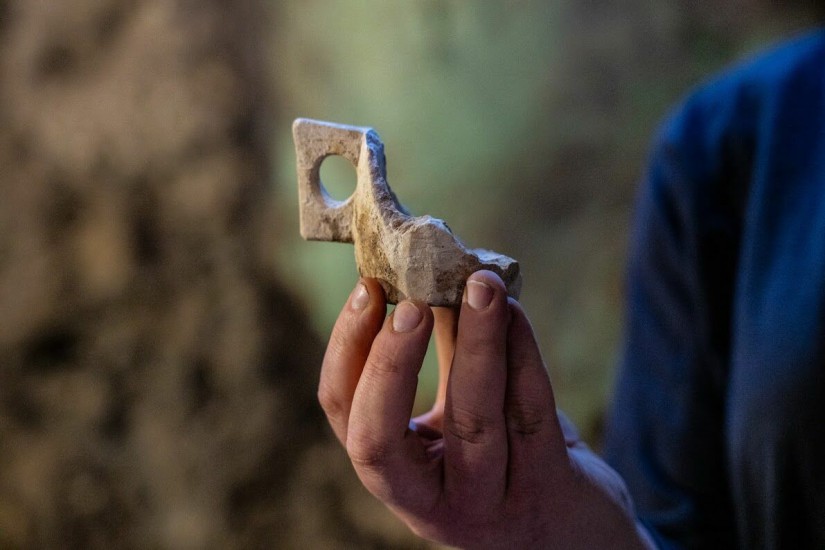 A measuring cup from the Second Temple period (Photo: Yaniv Berman, Israel Antiquities Authority)
A measuring cup from the Second Temple period (Photo: Yaniv Berman, Israel Antiquities Authority)At the entrance to the carved complex, they found recesses for securing door hinges and bolts. Rounded and square niches were carved into the walls, triangular containers for placing oil lamps, and elongated containers for hanging shelves. These findings suggest that the rock-carved system was used for daily activities. "Perhaps it served as a pantry for an upper structure that did not survive, or as an underground space accommodating life below," the archaeologists add.
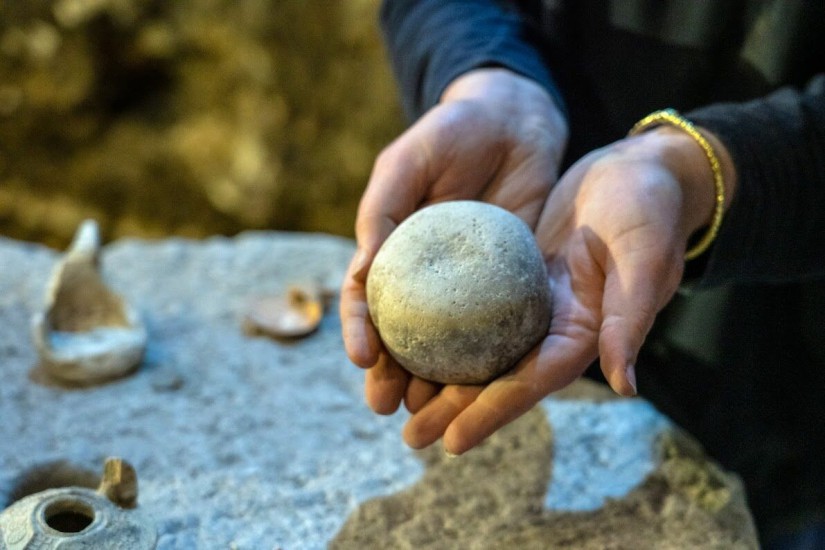 A weight from the Second Temple period (Photo: Yaniv Berman, Israel Antiquities Authority)
A weight from the Second Temple period (Photo: Yaniv Berman, Israel Antiquities Authority)The rock-carved system was entirely covered by a white mosaic floor of a grand public building, constructed at the end of the Byzantine period around 1,400 years ago, and renovated during the Abbasid period about 1,250 years ago. During the Fatimid period (11th century CE), the building was destroyed, and its findings were buried under a massive collapse until their exposure in this archaeological excavation.
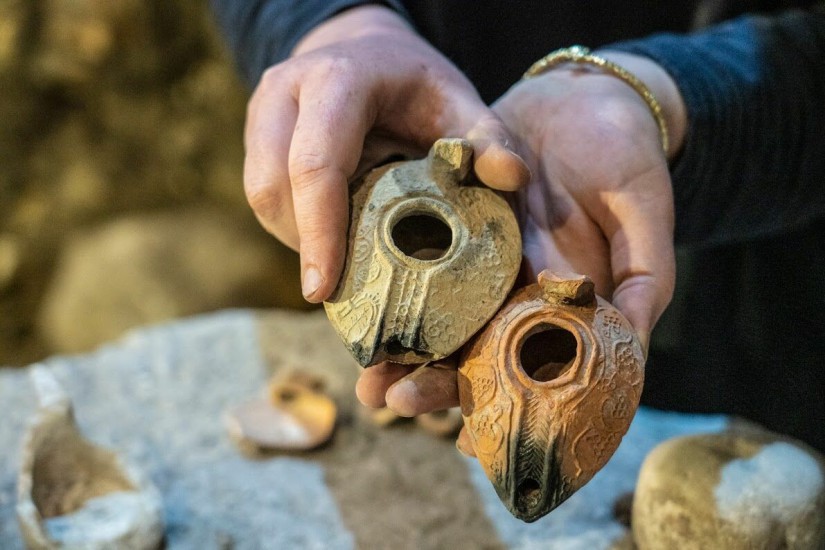 Abbasid period oil lamps decorated with grape clusters (Photo: Yaniv Berman, Israel Antiquities Authority)
Abbasid period oil lamps decorated with grape clusters (Photo: Yaniv Berman, Israel Antiquities Authority)Mordechai (Soli) Eliav, CEO of the Western Wall Heritage Foundation, stated, "I am thrilled, on the eve of Jerusalem Day, to present to the people of Israel a new trove of fascinating and impressive finds that shed light on the lives of the underground Jerusalem through the ages, especially before the Temple's destruction. These findings further demonstrate the deep connection of the Jewish people to Jerusalem, their capital. Even when various physical restrictions were imposed, prayers never ceased at the remnants of our Temple, and this is tangible proof of that."

